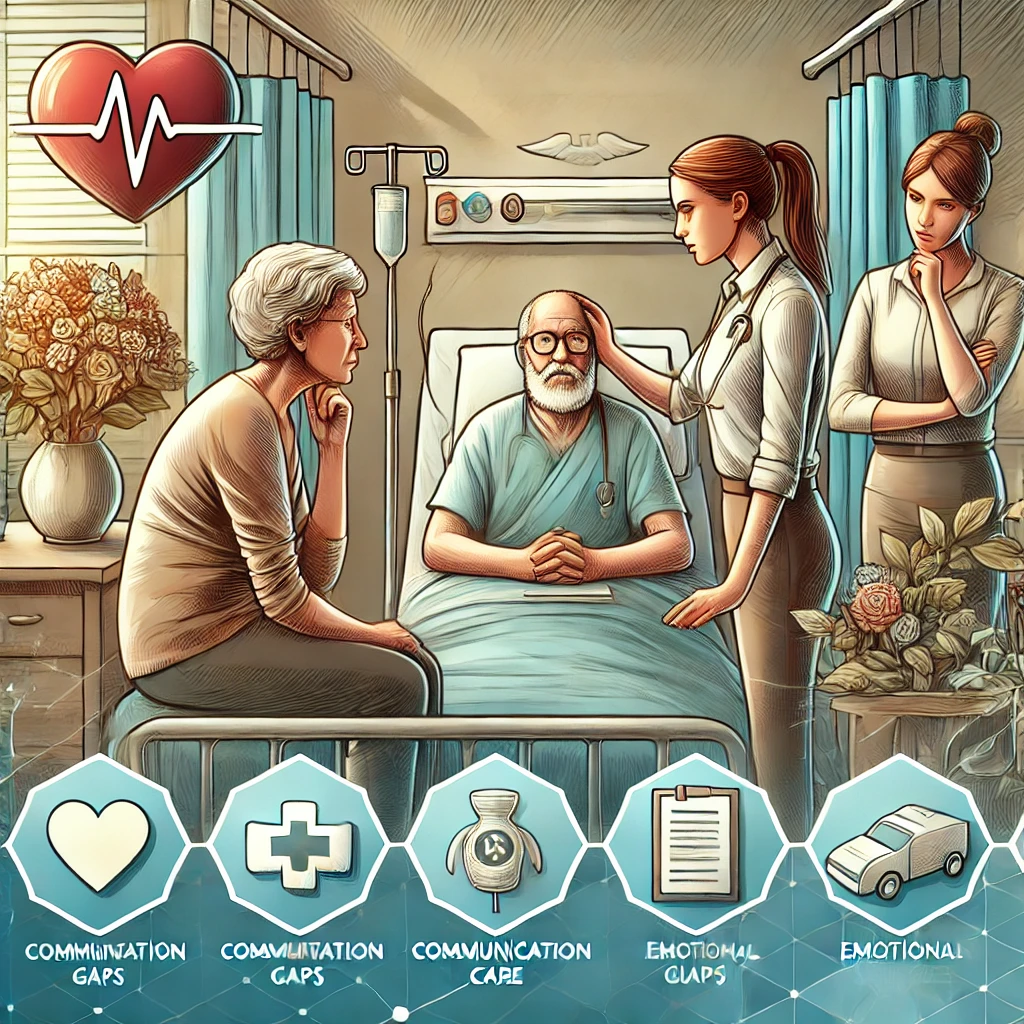Why Palliative Care is Bad: An Objective Exploration
Palliative care is a significant part of medical care intended to work on the personal satisfaction of people confronting chronic diseases. In spite of its advantages, a few reactions and misinterpretations encompass it. Understanding these worries can assist people with settling on informed conclusions about care choices. This article digs into why palliative care is bad, investigates likely disadvantages, and gives a decent point of view on the issue.
Why Palliative Care is Bad: Misconceptions and Realities
One normal justification behind the negative view of palliative care is a misconception. Many individuals relate it exclusively to end-of-life care or abandon remedial medicines. This misguided judgment frequently prompts defers to seek palliative administrations, denying patients the solace and sanction they need. Teaching general society about the more extensive extent of palliative consideration is fundamental to conquering this issue.
Limited Access and Inequality
Admittance to palliative care isn’t equivalent all over the place. Rustic regions and low-income locales frequently need particular palliative care groups. This imbalance in access implies numerous patients don’t get the help they need to oversee side effects successfully. Restricted assets and prepared experts compound this issue, letting families and parental figures bear the weight.
Perceived Abandonment
Patients and families now and then feel deserted while changing to palliative care. The shift from remedial medicines to comfort-centered care can genuinely challenge. For some’s purposes, it might feel like medical care suppliers are abandoning the patient. Compelling correspondence between clinical experts and families is fundamental to tending to these worries and guaranteeing smoother progress.
Ethical Dilemmas
It frequently includes complex moral choices. Families and parental figures might battle with decisions about the existence of supporting medicines, or side effects for the executives. Offsetting the patient’s desires with clinical guidance can cause strain and close-to-home pressure. These circumstances feature the requirement for clear, empathetic correspondence and backing from medical care suppliers.
Inadequate Symptom Management
While it plans to assuage agony and uneasiness, a few pundits contend that it doesn’t necessarily succeed. Ineffectively overseen side effects can prompt a decrease in the patient’s satisfaction. This is frequently because of an absence of specific preparation or assets in specific offices. Guaranteeing predictable principles across palliative consideration programs is essential to tend to this worry.
Psychological Impact on Patients and Families
Its mental effect can be significant. Patients might encounter uneasiness, despondency, or sensations of sadness. Families, as well, can feel overpowered by the profound and down-to-earth requests of really focusing on a friend or family member. Without satisfactory mental help, these difficulties can take away from its advantages.
Communication Gaps
Viable correspondence is the foundation of valued palliative care. Notwithstanding, miscommunication or absence of straightforwardness can prompt disappointment. Patients and families may not completely grasp its objectives or the accessible choices. Ordinary, open discussions between medical services suppliers, patients, and families are vital for building trust and understanding.
Cultural and Religious Beliefs
Social and strict convictions can likewise impact its view. A few networks view it as disconnected from their qualities or confidence, especially on the off chance that it includes restricting life-supporting medicines. Tending to these convictions with awareness and regard is essential to giving socially skillful consideration.
Financial Challenges
Its expense can be a critical weight for families. While certain administrations are covered by protection, others might expect personal costs. These monetary tensions can cause palliative consideration to appear to be unavailable or unwanted. Policymakers should pursue making it reasonable and broadly accessible.
Balancing Curative and Palliative Care
One analysis of palliative care is that it can, in some cases, eclipse corrective choices. Patients and families might feel constrained to pick solace over expected medicines. This discernment can cause struggle and disappointment. Incorporating palliative consideration close by remedial medicines, when fitting, can assist with tending to this worry.

Improving Palliative Care
To conquer these difficulties, a few platforms can be taken:
- Government-funded Instruction: Expanding mindfulness about what palliative care involves can disperse misinterpretations and energize prior access.
- Better Preparation: Guaranteeing medical services suppliers are thoroughly prepared in can further develop side effects for the executives and correspondence.
- Available Administrations: Extending its administrations to underserved regions can diminish disparity in access.
- Basic reassurance: Offering mental support for patients and families can relieve emotional pressure.
- Social Awareness: Fitting consideration to line up with social and strict qualities can further develop acknowledgment and fulfillment.
Conclusion
Understanding the reason why palliative care is bad according to specific viewpoints is fundamental for working on its execution and acknowledgment. Confusions, restricted admittance, moral situations, and correspondence holes are only a portion of the issues that add to its negative insight. Tending to these worries requires cooperative exertion from medical care suppliers, policymakers, and networks. By concentrating on training, openness, and quality improvement, it can all the more likely serve patients and their families, offering the solace and support they merit during troublesome times.



